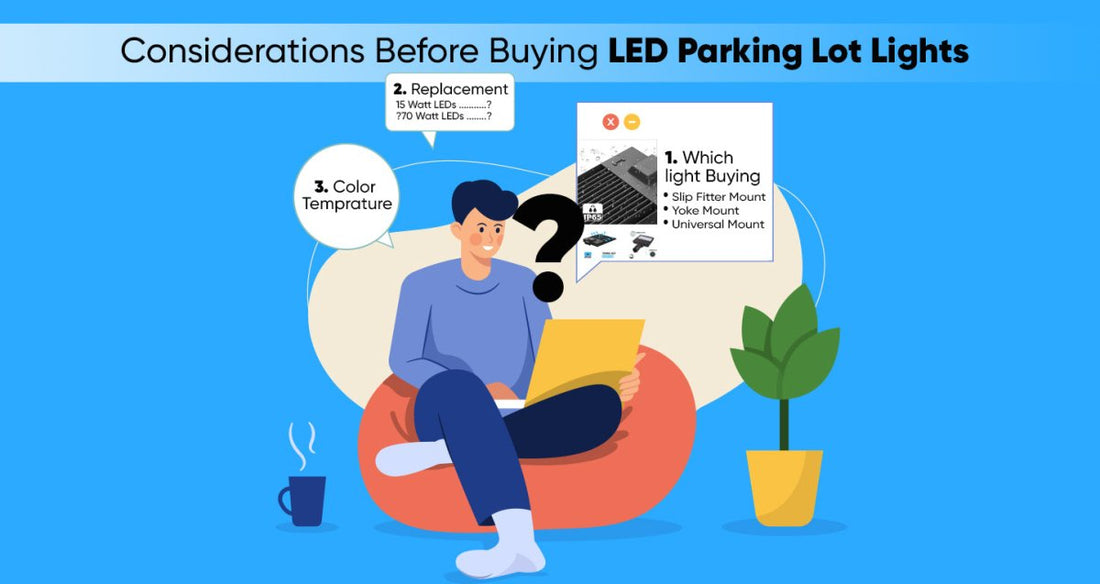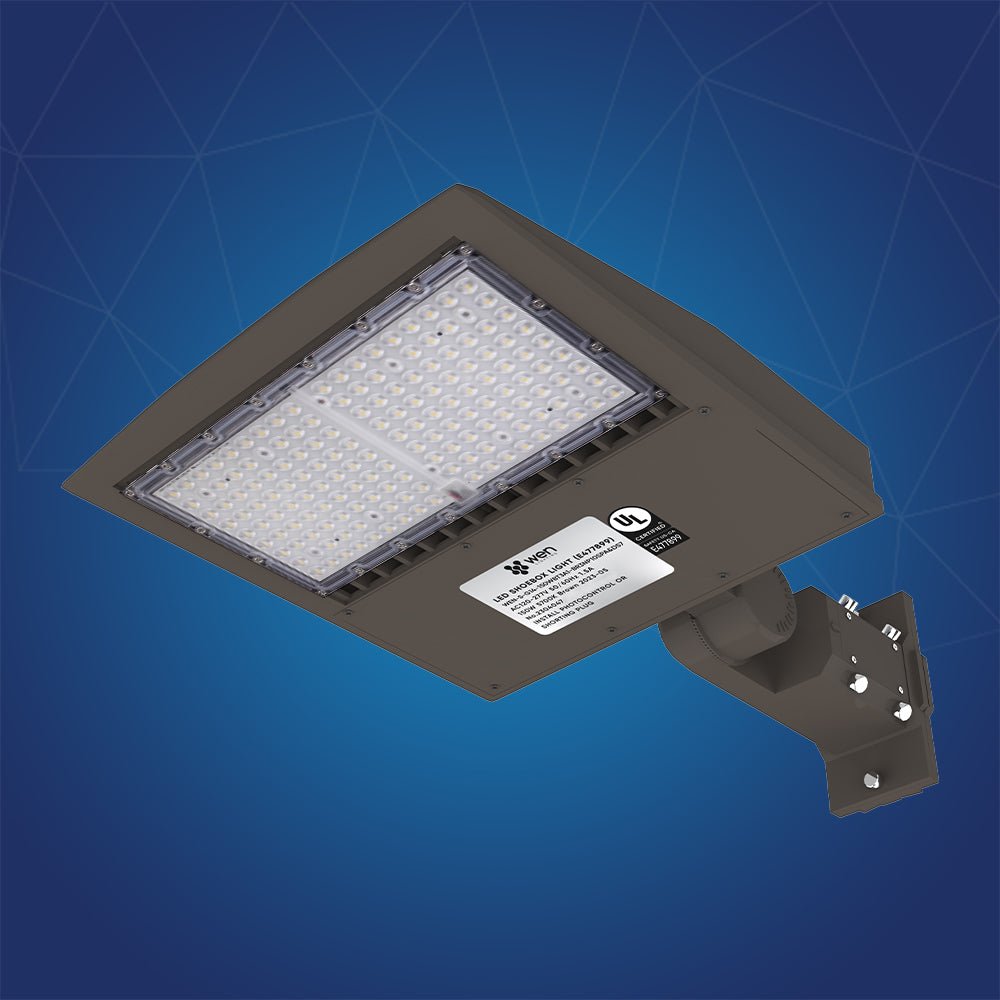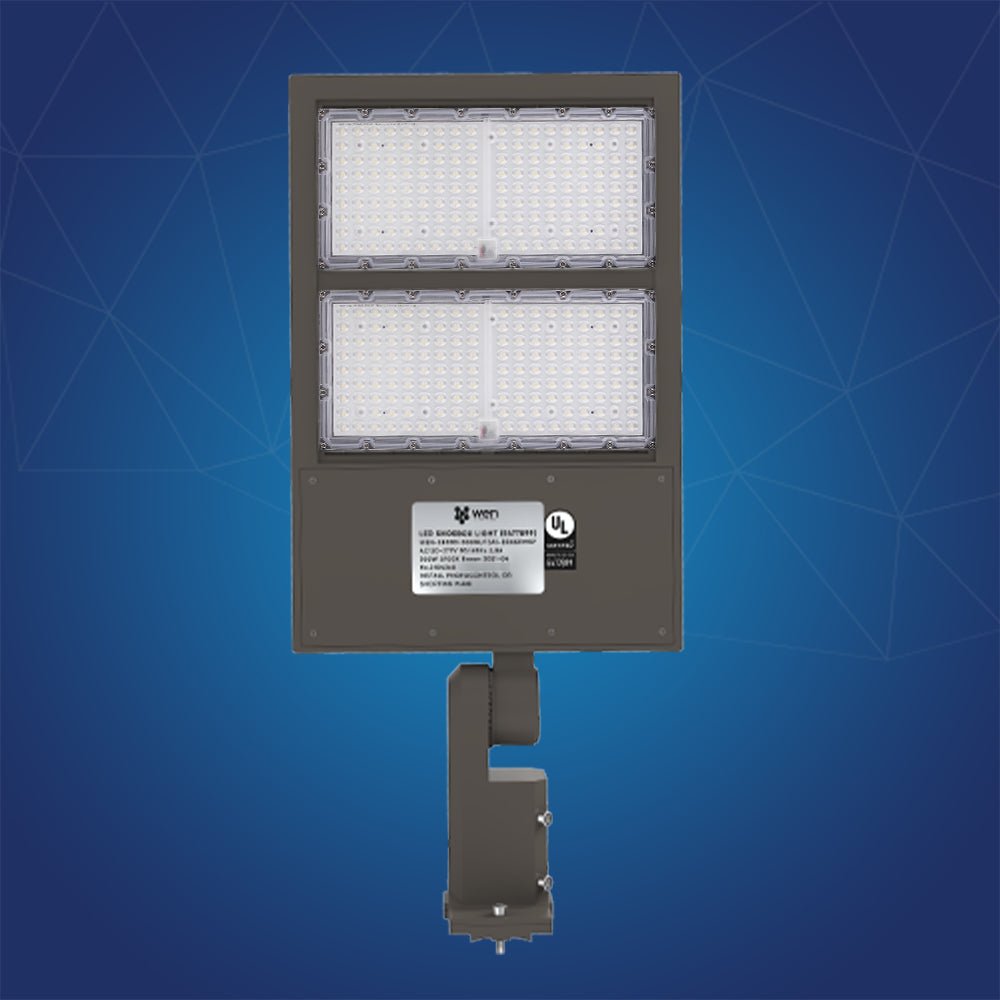If you own a commercial building, you should consider converting to LED lighting. These lights are particularly useful in parking lots and have several advantages over conventional lighting methods. The harsh environmental elements do a lot of damage to the lights in parking lots. This raises their maintenance requirements for them to continue functioning properly and ensure the safety of those traveling through the parking lots.
The ability to save energy is one of the significant benefits of using LED lamps, but there is more to learn. Unless specifically mentioned, LED lights do not emit UV rays. This provides a sense of security and makes them more friendly for pedestrians and passers-by.
Compared to other lighting systems, LED lights have a higher longevity quotient, making them low-maintenance and more harm resistant. As a result, LEDs give more than they take. What else is needed to decide to choose LED lights over other options? One should take some considerations before buying LED Parking Lot Lights, so let’s talk about them.

If you have any current lighting? What's the state of your lighting?
If this is a brand-new project, you'll need to factor in the cost of poles, overhead cables, and other materials. If you already have poles, the operation would be much easier. How are the light levels, assuming you already have poles? Converting to LED is simple if you like what you have. If you need additional lighting, a lighting plan would be beneficial.
To make the process go more smoothly, you can start by hiring an expert electrical contractor or any general contractor. At the same time, understanding the existing and modern lighting systems would be beneficial to you.
Before you begin the process, there are a few things you should be aware of:
- Find out what kind of light fixture you have now. If you're not sure, take a snapshot.
- If the fixture is mounted on a pole, wall, or has a trunnion or slip fitter, look at the mounting form and foundation. Take a photograph. For more precise identification, show it to a knowledgeable salesperson.
- Check the light bulb to see if it's high-pressure sodium or a metal halide.
- Determine whether the wattage is 400W or 1000W.
- Determine whether the line voltage and phase are 277V, 480V, single-phase, or three-phase.
- Understand the price of electricity.
- Know who your utility provider is.
- Know how long your current lights have been on.
- Check to see if you have or want to use any timers or photocells to save even more money.
- Examine the current lighting needs to see if the existing lights are adequate. The new approach is capable of resolving all of the problems.
- Examine the lifespan of your existing lights to see if they can be improved by retrofitting.
Understand the different mounting options for parking fixtures.

You may not have paid enough attention to this part before, but knowing what sort of mount you'll need is equally critical. Knowing the kind of mount you'll need ahead of time will help you avoid any installation problems later on.
Mountings may sound a bit technical, but this could be one of the essential considerations before installing LED Parking Lot Lights.
There are basically three types of mounts available in lot light fixtures:
1- Slip Fitter Mount
Have you ever heard of Slip Fitter Mounted LED Parking Lot Lights? If not, let us inform you that LED Parking Lot Lights with Slip Fitter Mounts are available and can be an excellent substitute for traditional lights. They are available in three color temperatures: 3000k, 4000k, and 5700k. Many LED lights with Slip fitter mounting are available in a variety of wattages, body finishes, and lumens.
2- Yoke Mount
Yoke Mounting LED Parking Lot Lights come in just two configurations: with or without photocells. The sun serves as the stimulus for the photocell, which ensures that the lights are turned on and off automatically. There is only 150W light available with a color temperature of 5700K. These 150-watt LED lights replace 450-watt incandescent bulbs. So, do you see how efficient this light is in terms of energy consumption? It's incredible!
3- Universal Mount
Are you having trouble mounting your pole? Do you find it challenging to choose the best LED Parking Lot Lights? Then LED Parking Lot Lights with universal mounting are your best choice. This is a parking lot light that can be put on almost any pole. There are a variety of lumens, wattages, and certifications available for these lights. With photocell, without photocell, rebate eligibility, dimmable, and motion sensors are just a few of the special features.
What is the best LED wattage for you?
A watt is a unit of measurement for electricity. On the other hand, LEDs are much more energy-efficient than other conventional light sources, allowing them to generate equal effective lumens while consuming much less energy. As a result, comparing “watts” to “megawatts” is not a good approximation. Instead, concentrate on the number of lumens emitted by a fixture.
Even among LED products, there is a lot of variation in terms of how much power is consumed and how many lumens are generated. LEDs use fewer watts than conventional light sources, so you'll still save money. Here's a checklist to assist you in making your decision:
On the cut sheet of the LED, check the lumen output rate. If it’s not mentioned, divide the lumen output number with the watt consumption number, and you will get the result. If the rate is less than 130 lumens per watt, the LED you've selected is out of date.
A rate of 130 lumens per watt is a reasonable starting point. Lights with a lumen-per-watt rating of 170 or higher are even better. If the Parking Lot light is DLC certified, it is rebate eligible, which means you will get some money back after purchasing them.
Let’s talk about the wattage replacement done by LED Lights:
- 15 Watt LEDs -----------> 55 watts
- 30 Watt LEDs -----------> 105 watts
- 50 Watt LEDs -----------> 175 watts
- 70 Watt LEDs -----------> 245 watts
- 100 Watt LEDs ---------> 350 watts
- 150 Watt LEDs ---------> 524 watts
- 200 Watt LEDs ---------> 700 watts
- 240 Watt LEDs ---------> 840 watts
- 300 Watt LEDs ---------> 1050 watts
Which color temperature is the best?

The majority of commercially available LEDs have color temperatures ranging from 3000K to about 6500K. Although this is the most effective selection, the following colors are by far the most popular:
1- 3000k – Warm White, Soft Light that’s found in residential applications.
2- 4000k – Natural White, this light is similar to moonlight. It gives off blueish, cool hues.
3- 5000k – Most identical to daylight. Very suitable to see a high level of detail.
4- 5700k – Available in some LED Parking Lot Lights. Basically Bright white or Daylight white.
Questions in Mind? Let’s Discuss!
1- What are the uses of street and parking lot lights?
Many things can be done with street lights and parking lot lights. These lights can be seen lighting playgrounds, parks, and sidewalks in addition to roadways and outdoor parking lots. These lights are also available in lower-powered models with a more architectural style. These post top fixtures are suitable for use along park paths, as well as walkways and sidewalks.
2- What advantages do LED parking lot lights provide?
LED street lights and parking lot lights have many advantages. Since LED parking lot light fixtures do not use bulbs, they are weather, insect, and other environmental hazards resistant. LED lights can also withstand high temperatures; they don't get as hot as HID lights and switch on instantly. They don't take long to warm up and hit their maximum light intensity. LEDs also use less energy than other types of lighting.
3- How many lumens do I need for a parking lot?

We usually recommend two LED Parking Lot Light heads of 20,000 lumens each at about 15-20 feet high on each pole. Space the pole about 20 feet apart. That is average lighting. Go brighter and higher if you want your space more inviting.
4- What kind of lights are used in parking lot lights?
Most parking lot lights utilize one of three types of lamps: high-intensity discharge (HID) lamps such as metal halide, high-pressure sodium, and - if they are very old - mercury vapor lamps.
5- What is a shoebox light?
Shoebox lights are commonly the size of shoes, from about a foot long to 16 inches. These lights are found at sports stadiums, county fairs, and large parking lots. Despite their small size, these LED lights generate up to 80 percent energy savings.
Installing LED Parking Lot Lights
Now we have discussed all the reasons to buy LED Parking Lot Lights, so let’s also discuss the step-by-step installation of these lights:
Step 1- Disconnect the Adapter Plate and the Rubber Gasket.

The adapter plate and rubber gasket should be removed from the bracket first.
Step 2- Fix to the Pole Bracket (Square/Round)

Please double-check that the square pole or fixture surface has the same mounting holes as the square pole or fixture. After that, place the square/round pole bracket against the fixture surface and place the rubber gasket between the square/round pole bracket and the appropriate fixture surface, then bolt the square/round pole bracket to the square pole.
If required, attach the bolster plate to the square pole's inside surface, then tighten the bolster plate with the bolt.
Step 3- Wiring

Shield the wire by pushing it through the hole and into the square/round pole bracket. Attach the power wire to the pole wire, then use a bolt to secure the rubber gasket and junction box cover.
Step 4- Secure with a bolt

Tighten the bolt after adjusting the lamp body to the desired angle. You have now completed the installation of the LED parking lot light.
Some Cautions to take!
- To prevent electric shock and fire, the lights must be mounted by a qualified electrician or someone with advanced knowledge of luminaire electrical systems.
- When installing this light, please wear protective gloves to prevent injury.
- If there are any signs of smoke, fire in cables, or lights during or after installation, switch off all power immediately and inform appropriate staff or authorities of an overhaul.
- This light can be installed both indoors and outdoors.
So these are all the considerations you should take before buying any LED Parking Lot Lights. Be smart, be creative, and be an LED consumer.

















































































